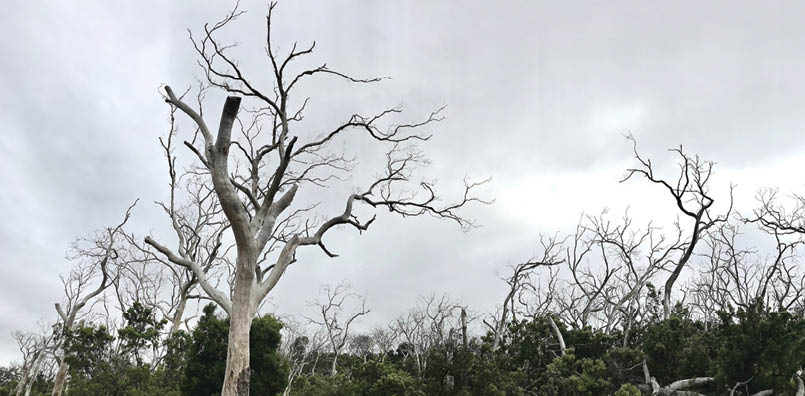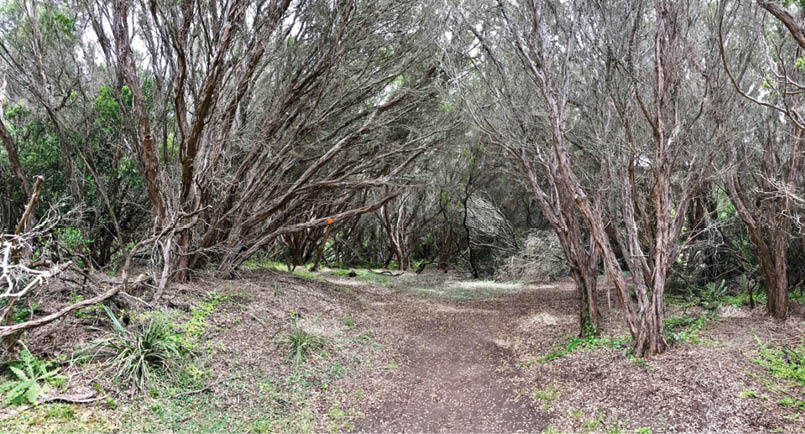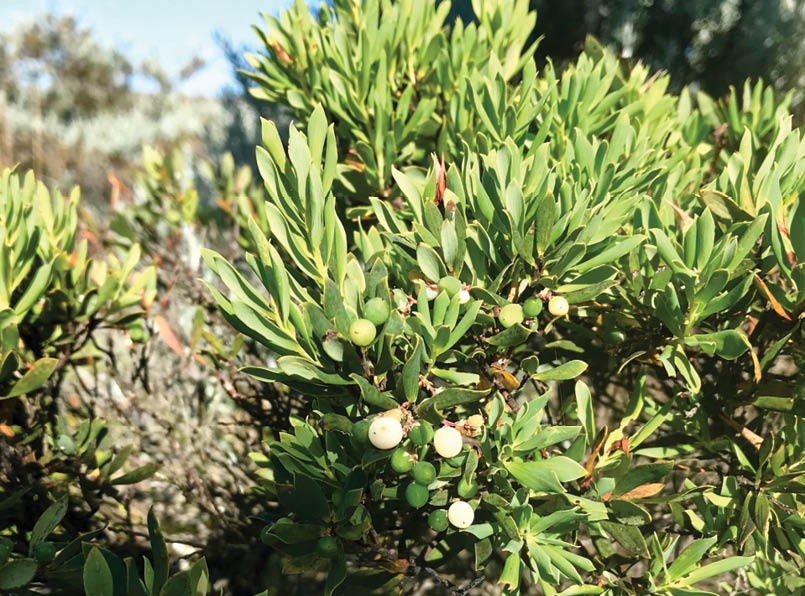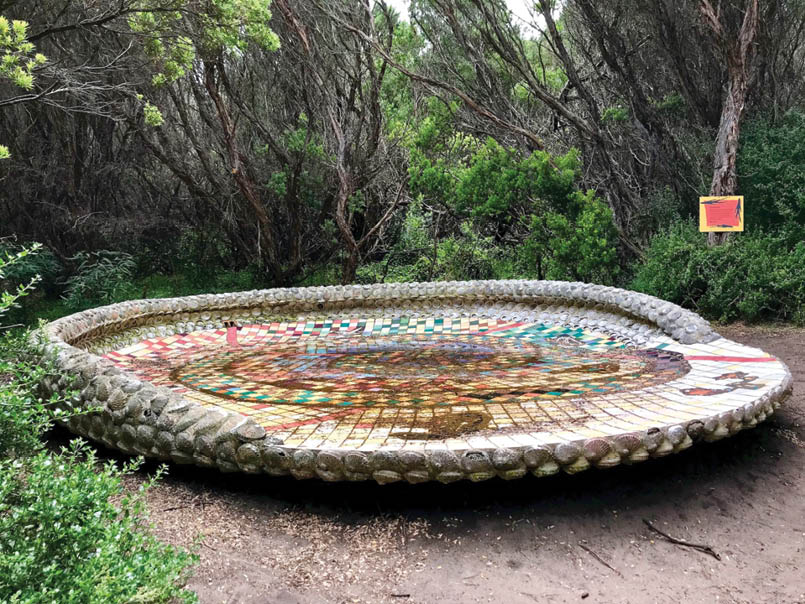{{{description}}}

I can’t remember now, what her reply was. It’s probably something to do with the historical importance, because Suraya is the kind of traveller who reads history displays even more than I do. But it was her next remark that convinced me, and it had nothing whatsoever to do with Australian history.
“You’ll like it,” she said. She had already gone on the Great Ocean Road before I came, and had seen the approach to the lightstation. “It has this forest before you get there, where the trees are all white and with no leaves. It looks really creepy, like an enchanted forest.”
Well, you don’t get to BFF status without knowing my oddball tastes exactly! I was sold.
Cape Otway Lightstation OverviewThe admission fee to Cape Otway Lightstation isn’t cheap. The additional special tours are even more expensive. But, is it worth it?
After going into the grounds on a general admission ticket, I think that Cape Otway is definitely a worthwhile stop (even without the petrified forest). The daily tours covered both history as well as Aboriginal culture. Both are well worth following.
- History Talk: 3 x daily (11 am, 2 pm, 4 pm)- Bush Tucker Talk: 2 x daily (12 noon, 3 pm)
Here’s my tip: arrange your road trip itinerary so that you can go for the bush talker talk. It
was not only my favourite tour on this road trip, but possibly among the best tours I’ve taken, period. Or … stay in the old lighthouse keeper cottages? This makes more sense during whale season, since more time on site is conducive to spotting passing whales at the whale viewing station.
As for the special tours, I think that will depend on how interested you are in the focus topics. The Cape Otway website provides further details that can help you decide. However, for a casual visitor without an existing interest in history, it seems a bit expensive.
Extra tip: Stop for lunch here. It’s a very pleasant spot for it. The cafe has an al fresco area with a great view of the lighthouse.
The website say that "we have taken the difficult decision to close the site to Day Visitors from the 1 July 2021. We will be continuing to operate our accommodation and pre-booked guided tours only with limited staff. A Winter Tour Program will be announced on our website once details have been finalised, to facilitate ongoing access to the site. We are committed to continuing the full time operation of our accommodation until the end of our lease in June 2022 and hope to be able to reopen the site to day visitors during peak periods once visitation levels increase."
“... possibly among the best tours I’ve taken, period.
BWA August 2021 | 11

So when he began talking, I was not surprised that Suraya’s mad convictions were once again proven correct. He might look Caucasian, but his heart and soul is all Aboriginal.
Why did we like the bush tucker talk?It was an extremely fun talk! He utilised many of the bushes and shrubs around the talking hut, giving us a crash course on how not to die if left out in the bush all by yourself. I can never forget the hilarious, yet infinitely more sensible method of hunting emu than chasing it down. Suffice to say that it involves daubing yourself with emu poo, and taking advantage of the emu’s poor eyesight to fool it into thinking you’re an emu too!
It was actually fairly difficult for us to follow the talk, due to the guide’s very fast speaking pace and thick Australian accent. It was too fast for us to remember exact details, but slow enough for us to remain enraptured by his eccentric storytelling and energetic instruction in bush foraging. His disparaging dismissal of what he considered to be excessively onerous Western agriculture was very amusing!
There were many such anecdotes, all meant to illustrate the worldview of Aboriginal peoples. That their way was to attain a high degree of knowledge of their own land, which then enables them to obtain food with very little exertion.
Aboriginal and Malay worldviewsWhen we were back on the road, Suraya confided to me how much she liked the bush tucker talk. Despite having been in Melbourne for nearly a year, that was her first introduction to Australian Aboriginal culture. It was very different from mainstream Australian culture, she said. A completely different worldview.
Not a worldview of comparing and competing, of exertion and industriousness for the sake of "more".
Instead, it was a way that sees the sign of the impending arrival of migrating birds, and begins walking to arrive just in time for the hunt. It was a way that forages as you wander, scattering seeds along the way so that future generations would have more shrubs to forage from along the same route. It was a way that doesn’t bother to harvest seafood before it is the right time. Its way to find food is more by cleverness and cunning, rather than superior force.
She said, it was the first time that she felt things made sense, since she came to Australia.
“... scattering seeds along the way so that future generations would have more shrubs to forage ...
BWA August 2021 | 13

I can’t say that the Malay worldview is quite the same. We were a nation-building people, so there is an element of striving and industry. But at the same time, I understood what she meant. Competition is difficult for us, whose natural inclination is to maintain harmony. And for Suraya personally, I knew that her character is just like that – necessary exertion only, and don’t force anything.
It’s difficult for me to say why this is not the better worldview. At least, not while considering myself still a good person.
The extent of my bush tucker knowledgeI still remember two things I learned about foraging in the bush. It was because I applied the knowledge straight away, while still on the road trip. I can’t remember the names of the shrubs, but I know what I can eat from them.
I kept foraging at almost every stop throughout our road trip, to Suraya’s great disapproval. Her medical profession naturally inclines her to a cautious disposition, and she would rather I ingest only small amounts just in case I’ve been poisoning myself!
One was a shrub common on the top of the coastal cliffs along the Great Ocean Road which bear white berries (the white berries are ripe). Though you need to eat a lot of it if you’re seriously looking for something to eat, occasional snacking on the little berries is quite fun.
The other one was a green shrub with vaguely diamond-shaped leaves. Just pluck the leaves and eat them directly. I remember the taste was slightly salty. This one could be mistaken for a different shrub, so I had to look at the overall shape of the shrub to be sure. Nevertheless, the other shrub didn’t seem to be poisonous. You know immediately when you’re wrong, because the leaves taste different and are completely yucky.
“Competition is difficult for us, whose natural inclination is to maintain harmony.
14 | BWA August 2021

BWA August 2021 | 15